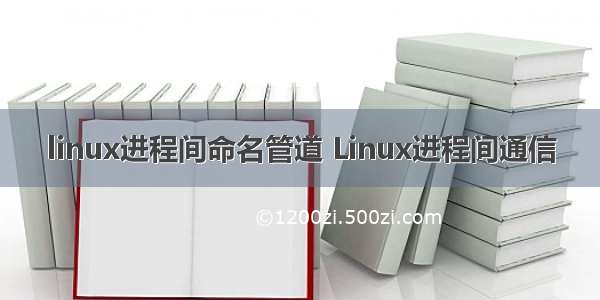
8种机械键盘轴体对比
本人程序员,要买一个写代码的键盘,请问红轴和茶轴怎么选?
上一篇笔记记录了无名管道,也就是匿名管道进行进程间通信必须满足的条件是父子进程,而本篇笔记将记录是是比无名管道通信更加便利的通信方式,也就是命名管道,命名管进程间通信没有父子进程的限制。
二.创建与删除管道文件
FIFO文件,和普通文件操作方式类似,有2种创建和删除FIFO文件的方式
2.1.调用函数
2.1.1.原型创建管道文件函数原型#include
#include
int mkfifo(const char *pathname, mode_t mode);//创建参数pathname为要创建的FIFO文件的全路径名;
参数mode为文件访问权限
如果创建成功,则返回0,否则-1。删除管道文件函数原型#include
int unlink(const char *pathname);参数pathname为要创建的FIFO文件的全路径名;
2.1.2.例子创建///
/// @file 03_1_mkfifo.cpp
/// @author AverageJoeWang([emailprotected])
///
#include
#include
#include
#include
#include
using std::cout;
using std::endl;
int main()
{
int ret;
ret = mkfifo("./pipe", 0666);
if(-1 == ret)
{
perror("mkfifo create failed!n");
return -1;
}else
printf("success!n");
return 0;
}删除///
/// @file 04_Orphaned.cpp
/// @author AverageJoeWang([emailprotected])
///
#include
#include
#include
using std::cout;
using std::endl;
int main()
{
unlink("pipe");
return 0;
}
2.2.使用命令mkfifo pipename#创建
rm pipename#删除
2.3.测试
创建完毕之后,就可以访问FIFO文件了:#一个终端:
cat < pipe
#另一个终端:
echo “hello” > pipe
三.访问命名管道
对FIFO类型的文件的打开/关闭跟普通文件一样,都是使用open和close函数。如果打开时使用O_WRONLY选项,则打开FIFO的写入端,如果使用O_RDONLY选项,则打开FIFO的读取端,写入端和读取端都可以被几个进程同时打开。有四种打开管道的方式open(const char *path, O_RDONLY);//1
open(const char *path, O_RDONLY | O_NONBLOCK);//2
open(const char *path, O_WRONLY);//3
open(const char *path, O_WRONLY | O_NONBLOCK);//4
在open函数的调用的第二个参数中,选项O_NONBLOCK表示非阻塞,加上这个选项后,表示open调用是非阻塞的,如果没有这个选项,则表示open调用是阻塞的。
阻塞是对于以只读方式(O_RDONLY)打开的FIFO文件,如果open调用是阻塞的(即第二个参数为O_RDONLY),除非有一个进程以写方式打开同一个FIFO,否则它不会返回;如果open调用是非阻塞的的(即第二个参数为O_RDONLY | O_NONBLOCK),则即使没有其他进程以写方式打开同一个FIFO文件,open调用将成功并立即返回。
对于以只写方式(O_WRONLY)打开的FIFO文件,如果open调用是阻塞的(即第二个参数为O_WRONLY),open调用将被阻塞,直到有一个进程以只读方式打开同一个FIFO文件为止;如果open调用是非阻塞的(即第二个参数为O_WRONLY | O_NONBLOCK),open总会立即返回,但如果没有其他进程以只读方式打开同一个FIFO文件,open调用将返回-1,并且FIFO也不会被打开。
四.使用FIFO实现进程间的通信
接下来使用一个例子来说明使用fifo进行进程间通信首先执行mkfifo pipewrite.cpp文件///
/// @file 03_2_write_pipe.cpp
/// @author AverageJoeWang([emailprotected])
///
#include
#include
#include
#include
#include
#include
#include
#include
using std::cout;
using std::endl;
int main()
{
int fdFifo = open("pipe", O_WRONLY);//打开一个管道文件,返回一个文件操作符
if(-1 == fdFifo)
{
perror("open failed");
return -1;
}
int ret = write(fdFifo, "hello", 6);//向管道写入内容
if(-1 == ret)
{
perror("write pipe failed!");
return -1;
}
close(fdFifo);//关闭管道
return 0;
}read.cpp文件///
/// @file 03_2_read_pipe.cpp
/// @author AverageJoeWang([emailprotected])
///
#include
#include
#include
#include
#include
#include
#include
using std::cout;
using std::endl;
int main()
{
int fdFifo = open("pipe", O_RDONLY);//打开管道文件,返回一个文件描述符
if(fdFifo == -1)
{
perror("open failed !");
return -1;
}
char buf[32] = {'














